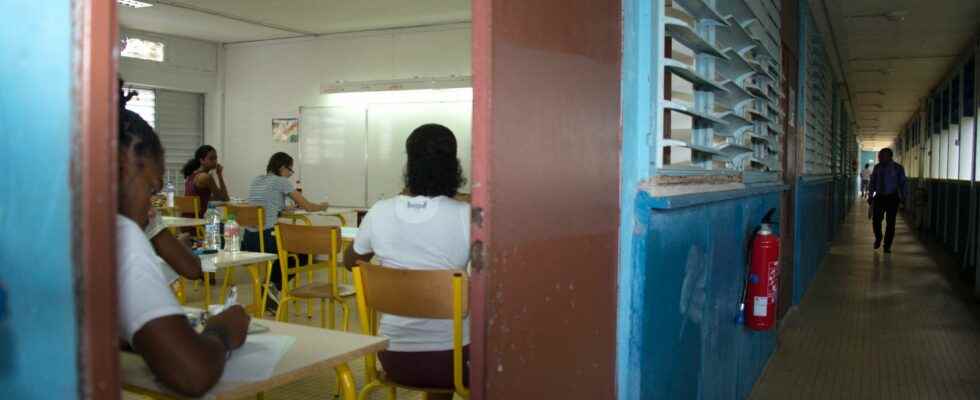The idea of introducing a compulsory uniform at school, a veritable sea serpent of National Education, has been reactivated by several deputies in recent weeks. A proposal from the National Rally to this effect was rejected by the National Assembly on Thursday evening January 12. Another bill has just been tabled in the Senate, while a group of Renaissance deputies has also created a think tank on the subject. Even First Lady Brigitte Macron spoke out on the issue in the columns of Le Parisien this week. In several overseas departments and territories, the measure, without being compulsory, is widely applied. However, this is not unanimous among students and their parents, as explained by the headmaster Philippe Lapin, academic secretary of the union of school heads SNPDEN in Guadeloupe.
L’Express: Wearing a school uniform is more common in Guadeloupe than in mainland France. How many establishments are affected?
Phillip Rabbit: Personally, I prefer to use the expression “regulatory dress” rather than the word “uniform” which can have a negative connotation and refer to a form of authoritarianism. In Guadeloupe, this measure is not compulsory but almost all schools and colleges apply it. Unlike general high schools where regulatory dress is often abandoned, with some exceptions. Arrived in second, the pupils are considered as more autonomous. They are generally delighted to be able to dress as they wish, perhaps with designer clothes, at least the way young people like to dress these days. Conversely, in the Louis Delgrès Vocational High School in Le Moule, which I run, we made the choice to adopt regulatory dress two years ago. What is done more and more in professional establishments.
For what reasons ? What advantages do you see in it?
This decision is mainly in line with the search for a peaceful school climate. Our regulatory dress – a sky blue t-shirt with the logo of the establishment and a black stocking which is often jeans – allows us to better monitor the surroundings of the establishment, to identify who is or is not part of our students. Checking incoming visitors to reception is also easier. A considerable advantage for a large establishment like ours, which has 800 young people. Within the school, the regulatory dress is a response to forms of inequality and social disparities since everyone is housed in the same boat in terms of dress. Finally, this goes with the idea that a school is a special space geared towards learning and requires a certain form of concentration essential to work.
There is therefore no question, for you, of going back on this decision…
I specify that this decision is not immutable. What is deemed useful at one time may be subject to relaxation later. Maybe in a few years, we will leave this device aside. It also seems important to me to mention that this measure, adopted by the Board of Directors, was the subject of consultation. The opinion of students and parents was taken into account and they had their say on the choice of the outfit, the texture of the t-shirt and its color. It seems essential to me that everyone be involved in such a decision. Because this, it must be admitted, can sometimes be badly perceived by the students, even by certain families. With us, it’s going well but it’s not necessarily the case elsewhere.
Is the school uniform the subject of debate as in mainland France?
Even if this measure is widely applied in our territory, we cannot say that it is unanimous. At a time when students are more in search of freedom, the fact of not being able to dress as they see fit can be badly experienced. I know that, in places, some young people lament not being able to wear an outfit that sets them apart. On the parents’ side, opinions are also divided. Some praise the practicality of regulation clothing, while others defend the need for young people to be able to mark their differences. For now, the debate has not yet been revived here in Guadeloupe but, given the national news, we can expect it to resurface in the weeks to come.
